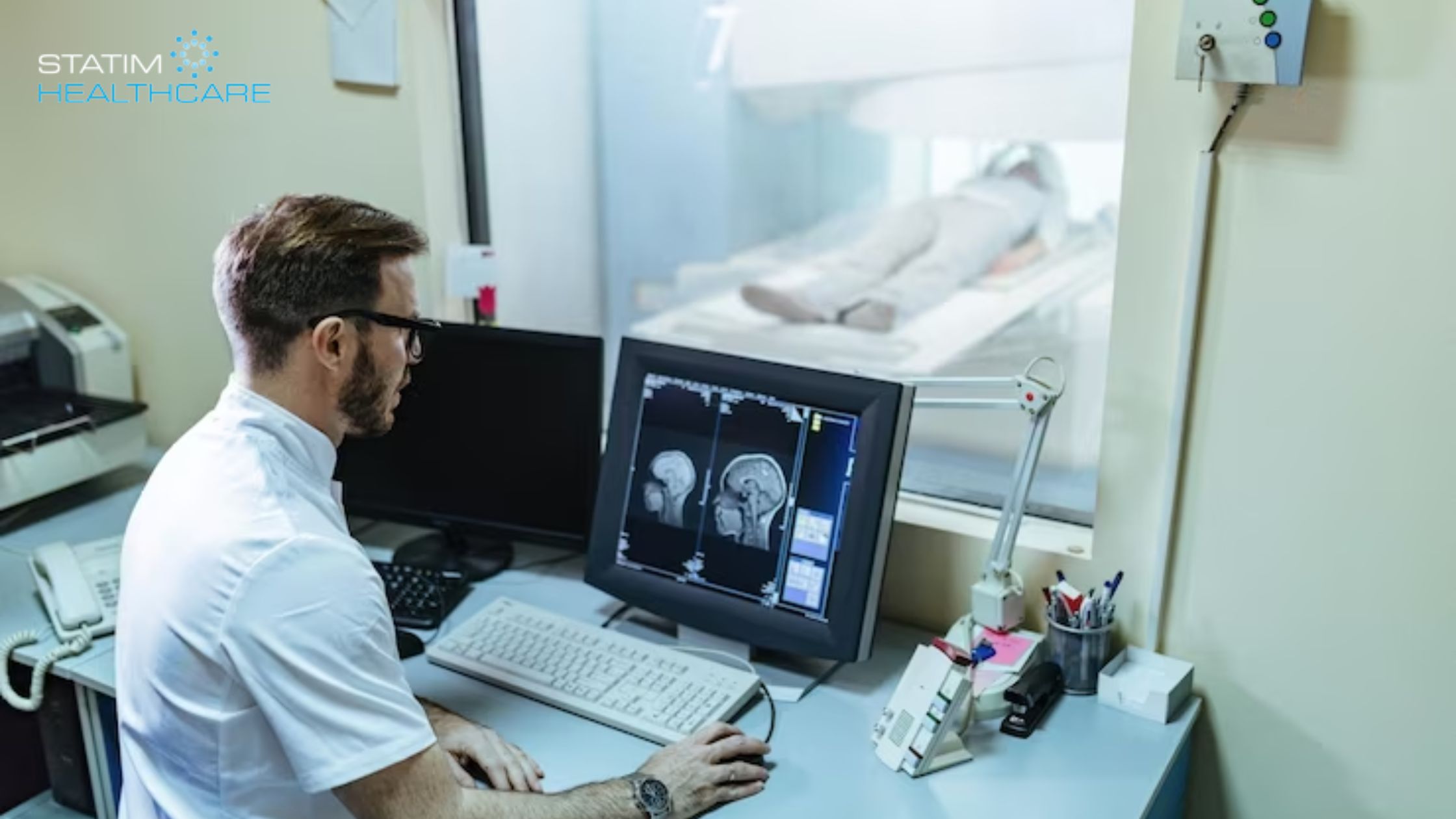Radiologic technologists are the healthcare professionals who perform diagnostic imaging tests. They work with patients to prepare them for the test, position them correctly, and operate imaging systems for medical diagnostics. They also help to ensure that the test is performed safely and that the images are of the highest quality.
Radiologic technology is an excellent option if you’re interested in a healthcare career. It’s a rewarding career that allows you to use your skills and knowledge to help people. And it’s a career that’s in high demand.
We’ll take a closer look at seven of the most common diagnostic imaging tests.
7 Common Diagnostic Imaging Tests
There are many different types of diagnostic imaging tests that radiologists may assist with. Here are seven of the most common:
X-rays
X-rays are a type of electromagnetic radiation that can be used to create images of the inside of the body. They are used to diagnose a variety of conditions, including fractures, broken bones, and tumors.
In order to image the body using X-rays, a little amount of radiation is focused on the target regions of the body.
Computed tomography (CT) scans
CT scans use X-rays to create detailed images of the inside of the body. They are used to diagnose a variety of conditions, including cancer, heart disease, and stroke.The giant donut-shaped CAT scanner drives the patient through its core as it takes pictures. For certain examinations, the patient may receive an oral contrast agent or an injection of contrast agent to help show what’s happening inside the body.
Magnetic resonance imaging (MRI) scans
MRI scans use a strong magnetic field and radio waves to create detailed images of the inside of the body. They are used to diagnose a variety of conditions, including cancer, brain tumors, and heart disease.
Patients lie down on a table that slides through a tube. The technician places the patient such that the magnet is over the area of the body being examined.
Ultrasound
Ultrasound uses sound waves to create images of the inside of the body. It is used to diagnose a variety of conditions, including pregnancy, kidney stones, and gallstones.
What will be examined during the ultrasound determines how to prepare. Prior to any testing involving the abdomen, patients must fast; however, water may be eaten.
Nuclear medicine
Nuclear medicine uses radioactive substances to create images of the inside of the body. It is used to diagnose various conditions, including cancer, heart disease, and thyroid problems.
Positron emission tomography (PET) scans
Because it may spot problems at the cellular level, a PET scan, also known as a positron emission tomography scan, is comparable to a medical test for diagnosing diseases. As part of the procedure, radioactive tracers are delivered into the body. The tracers use a PET scanner to identify problems that could otherwise go unreported until they worsen. They are used to diagnose a variety of conditions, including cancer, Alzheimer’s disease, and heart disease.
Mammography
Mammography is a type of X-ray that is used to detect breast cancer. It is recommended for women over the age of 40.
Radiologists use their knowledge of anatomy and physiology to interpret images and make diagnoses. They also work with other healthcare professionals, such as surgeons and oncologists, to develop treatment plans.
Radiology is a rewarding career that allows you to make a difference in patients’ lives. Radiology may be the right choice if you are interested in a healthcare career.
How Statim Healthcare Can Help
Statim Healthcare is a leading provider of knowledge-based solutions to hospitals and diagnostic centers worldwide. Statim Healthcare has a team of 15+ experienced radiologists who are experts in interpreting medical images and helping hospitals and diagnostic centers with diagnostic imaging services. This means you can be confident that your patients will receive accurate and timely radiology reports.
Statim Healthcare understands that time is of the essence in the healthcare industry, and this means your patients can get their results quickly, even if they need them outside normal business hours.
We can provide radiology reporting services for a variety of diagnostic imaging tests, including X-rays, CT scans, MRIs, and ultrasounds. This can save you time and money and ensure that your patients get their results quickly.
In addition to radiology reporting, Statim Healthcare also offers various other services that can help you improve the efficiency and quality of your diagnostic imaging department.
By partnering with Statim Healthcare, hospitals and diagnostic centers can benefit from increased productivity, reduced costs, and enhanced compliance with government regulations. Our solutions free up valuable time and resources, allowing healthcare professionals to prioritize patient care and deliver optimal outcomes.
Together, let’s transform healthcare operations and elevate the standard of patient care with Statim Healthcare.

